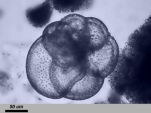
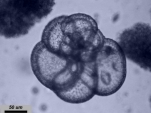
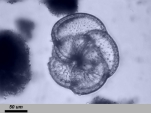
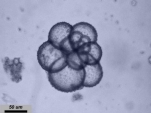
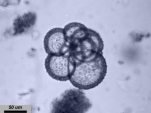
.
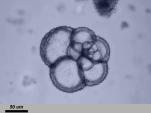
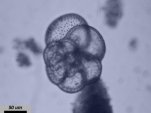
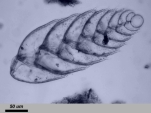
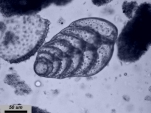
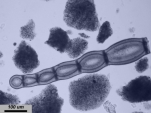
.
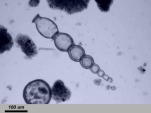
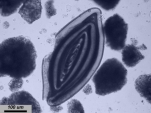
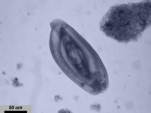
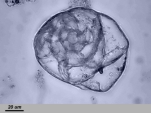
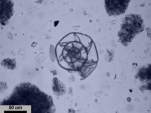
.

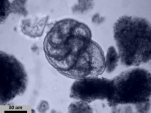
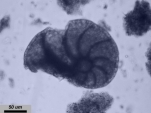
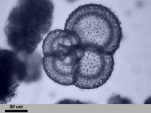
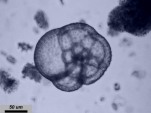
.

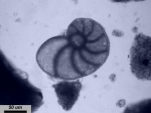
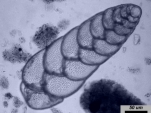
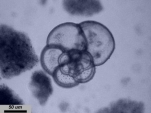
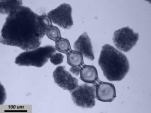
.
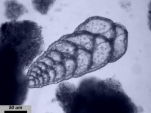
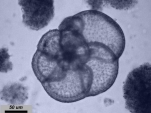
.
TEGEL OF BRNO (CZECHIA)
The "Tegel of Brno" is a greyish marl from Miocene (Badenium). Broken freshly it is a rather hard material which can only be crushed using a sharp hammer or a chisel. When covered with water it becomes a soapy pulp.
The best way of processing is the following: Put some pieces of walnut-size into a plastic bag, cover them with water and put the bag into a deep freezer. When completely frozen allow the water to melt, then repeat the process again. After two or three cycles the pulp is concentrated by sieving and sedimentation. To avoid agglomeration the processed material should not be dried. The water is replaced by Isopropanol, then the Isopropanol by Toluene or Xylene. After that micro-slides can be produced using a mounting medium whose refractive index should not be too high, otherwise the Foraminifers and Radiolarians will appear too dark or even intransparent.
The processed material contains a high quantity of Foraminifers, mainly of Globigerina-type, and many other species; in addition there are Radiolarians and some examples of Silicoflagelates and sponge spicules. Diatoms are absent.
Processing by using HCl to concentrate the Radiolarians connot be recommended, as the calciferous micro-breccias decompose producing an enormous amount of finest silica-silt which cannot be separated from the Radiolarians by simple methods.
The pictures on display give an overall view of the diversity of species. Pictures with long grey ribbons at their bases have been produced using "stacking" with the program HELICON FOCUS.
FORAMINIFERS
 |
 |
 |
 |
 |
| 1 . |
2 | 3 | 4 | 5 |
 |
 |
 |
 |
 |
| 6 . |
7 | 8 | 9 | 10 |
 |
 |
 |
 |
 |
| Nodosaria . |
Spiroloculina | 13 | 14 | 15 |
 |
 |
 |
 |
 |
| 16 . |
17 | 18 | 19 | 20 |
 |
 |
 |
 |
 |
| 21 . |
22 | Bolivina | 24 | Stilostomella |
 |
 |
|||
| 26 . |
27 | 28 | 29 | 30 |
RADIOLARIANS
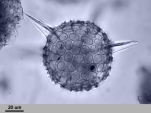 |
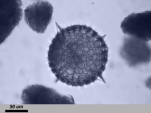 |
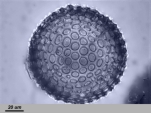 |
 |
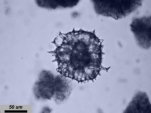 |
| 1 . |
2 | 3 | 4 | 5 |
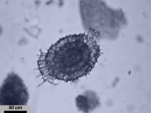 |
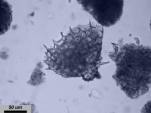 |
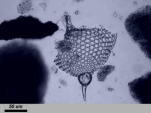 |
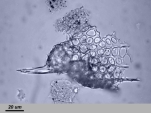 |
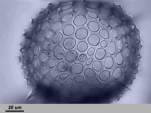 |
| 6 . |
7 | 8 | 9 | 10 |
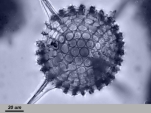 |
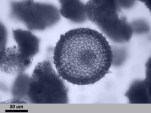 |
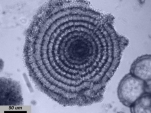 |
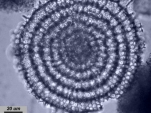 |
|
| 11 . |
12 | 13 | 14 | 15 |
UNIDENTIFIED
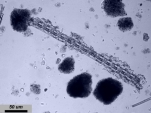 |
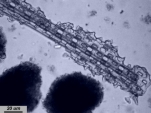 |
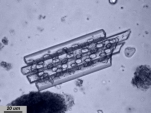 |
||
| 1 .Echinodermenstachel? |
2 | 3 | 4 | 5 |
Copyright: webmaster@mikrohamburg.de